Aquatic Plants
As their name suggests, true aquatic plants are species that grow entirely in water. Some may be rooted in the mud at the bottom of the water, while others are unrooted and floating - either at the surface or in the water column. This page will help you take the first step to identifying an aquatic plant. Note that there are many plant species that grow in wetland habitats, including along the margins of permanently wet rivers, lakes and ponds, and wet mud which may occasionally be flooded - especially by winter rains - but they are not included here and can be identified more readily by their flowers through the other links on the Home Page. Plants of saltmarshes that are only flooded by seasonal high tides are also not included here.
Many of these plants have small and difficult to find flowers, or may flower only rarely (often reproducing vegetatively rather than by seed), so the pages covering these plants tend to focus mostly on leaf and stem characters rather than flowers. At this stage, be sure to read the texts below carefully, as they contain identification information that may not be visible in the photographs; clicking to the next stage will help you get to the exact species.
Use the photos below to narrow your search to a group, then click on the picture to go to the next stage.
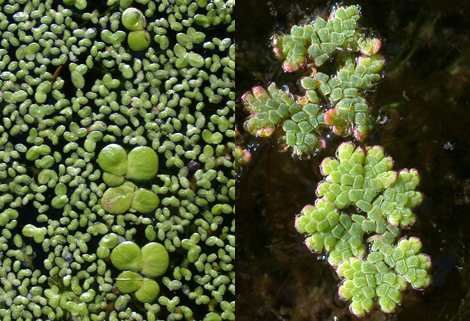 |
Duckweeds
The duckweeds are tiny plants that typically float on the water surface and often proliferate vegetatively to cover large areas, despite their small size. They often consist of a simple, leaf-like structure, with short roots on the underside, though roots may be absent in some species. Mosquito-ferns are included here, too, as they are superficially rather similar in appearance. Note that Ivy-leaved Duckweed typically floats in the water column, a little below the actual surface of the water. |
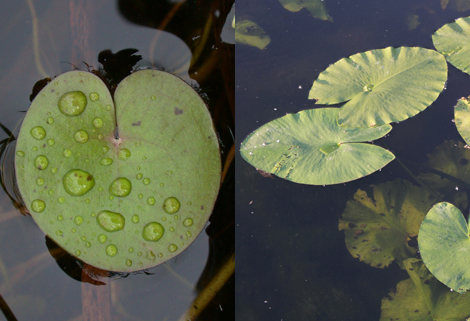 |
Water-lilies
Circular or oval leaves that float horizontally on the surface or sometimes project in a more upright manner above the surface. True water-lilies have relatively large leaves, to 40cm across, while unrelated, but similar, species may be much smaller, but have the same, general appearance. |
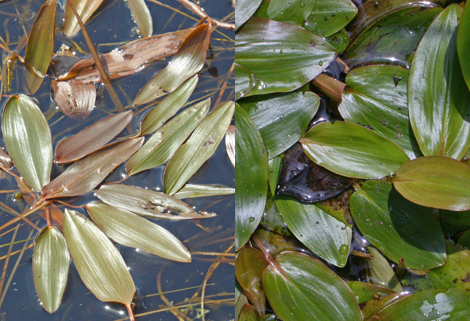 |
Wide-leaved Pondweeds
Plants with leaves that float on the water surface in the manner of water-lilies, but which are much smaller and more elongate in shape. This group includes the true pondweeds in the family Potamogetonaceae, as well as some 'look-alikes'. These plants may also be found on muddy areas that occasionally dry out, such as seasonal ponds. |
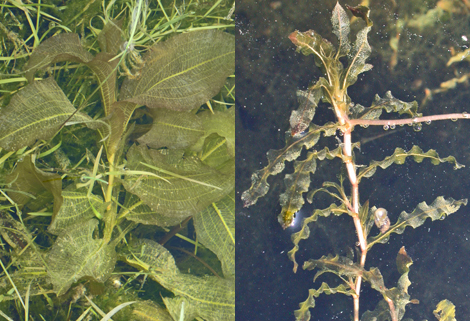 |
Wide-leaved Pondweeds
Plants with relatively broad leaves tht do not float at the surface but which grow as true subaquatics, beneath the water surface. Because of their broad leaves, these plants may be apparent from above, for example if looking down into the water from a bridge and their stems may be relatively short, or grow to several metres in length. |
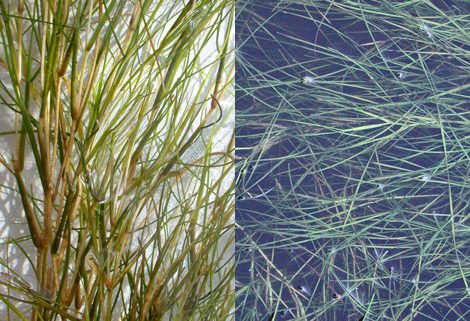 |
Narrow-leaved Pondweeds
Many submerged aquatics have long, narrow, 'grass-like' leaves. Such plants may be difficult to spot from above the water but often come to light with a little trawling with a stick or, perhaps more often, caught up in other objects that are pulled from the water. Subaquatics with grass-like leaves are mostly in the pondweed family, but also include the tasselweeds and eelgrasses. |
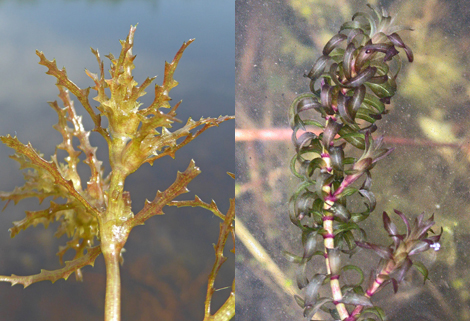 |
Waterweeds
These plants are typically more obviously branched than the pondweeds and often form dense, tangled masses of stems, along which the leaves may be arranged in pairs or in whorls (or sometimes spiralled). They are often popular with garden pond enthusiasts and are sold as oxygenators by aquatics suppliers. A number of these species are non-native and can be problematic for aquatic habitats when allowed into the wild as they grow rapidly and can smother other, less aggressive species. |
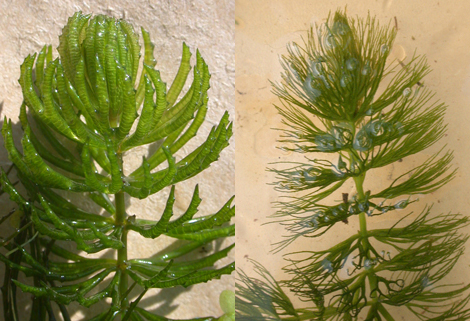 |
Hornworts
A small group of just two species in our region, with both having the look of a bottlebrush about them. The leaves have linear, forked segments and are arranged in whorls around the stem. They may be soft and pliant, or more rigid and slightly bristly. |
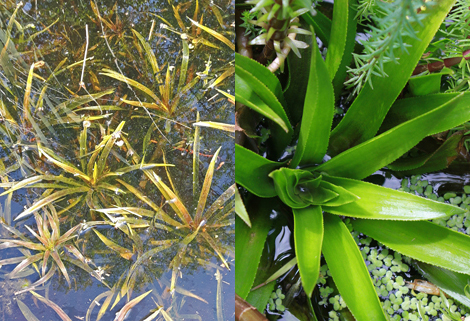 |
Water-soldier
An unusual plant that spends the winter submerged in the bottom of ponds and dykes. In the spring, plant rosettes rise to produce fresh, spikey leaves that project above the water surface and the plants produce three-petalled, white flowers. One or two leaf rosettes may appear in isolation or the plants may form dense colonies. |